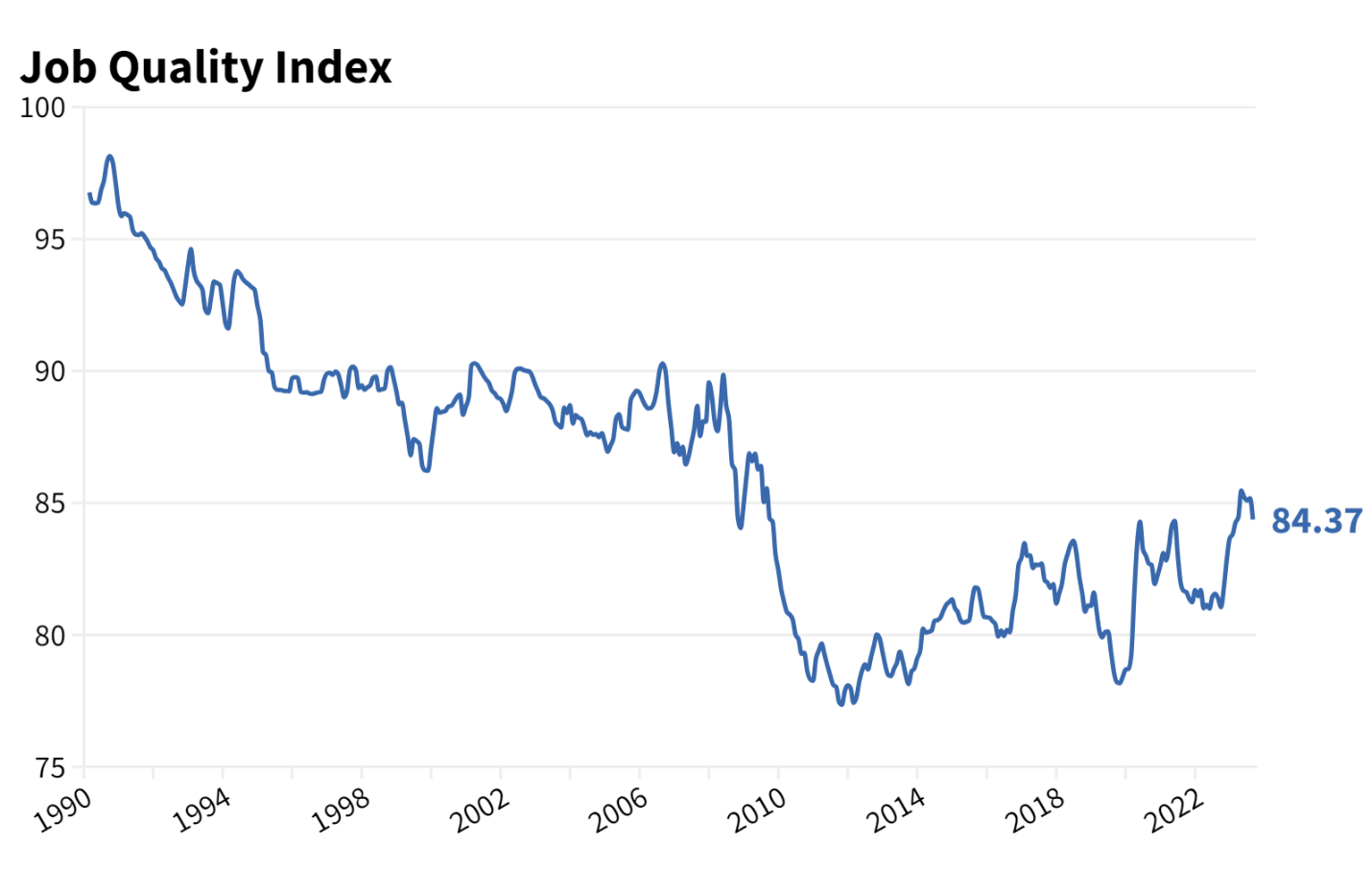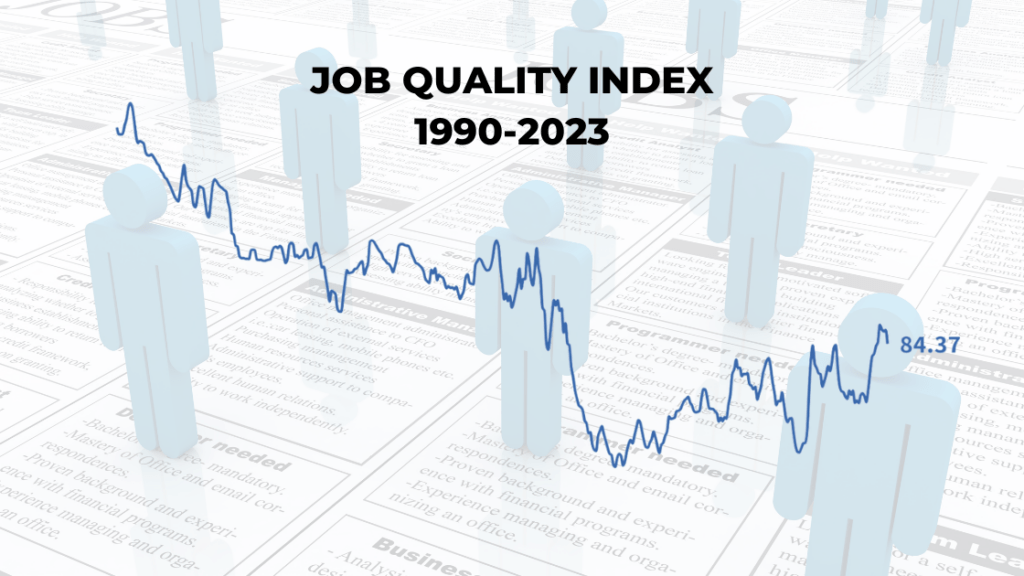WASHINGTON — The Coalition for a Prosperous America (CPA) today announced that the U.S. Private Sector Job Quality Index (JQI) for September declined by 0.66% in September to 84.37. After a strong reading in August, the JQI continued its downward trend in the second half of the year. Interest rate hikes by the Fed appear to be softening the labor market.
The decrease in the JQI for September was driven by job growth of low-quality jobs with below average wage and hours. Health care and social assistance added 84,300 jobs, but two-thirds (56,470 jobs) were low-quality. Accommodation and food services added 47,600 jobs, all of which were low-quality. In addition, construction lost 5,800 high-quality jobs in September. Employment growth has slowed over the past month and the sectors that added jobs are predominantly low-quality jobs.
The average weekly wage for production and nonsupervisory workers in September was $983.99, an increase of 0.29% from August and up 3.54% over the past year. Wages are still growing, but the rate of the growth has slowed significantly from earlier in the year. Annual wage growth is now below the annual rate of inflation of 3.7%, which means that workers’ purchasing power is being eroded and once again not keeping up with the rise in consumer prices.
The Bureau of Labor Statistics (BLS) reported overall job gains of 150,000 in October and the unemployment rate ticked up slightly to 3.9%. In addition, the past two months were revised downward by a combined 101,000 jobs. Manufacturing employment decreased by 35,000 jobs, but 33,000 of these were in the motor vehicle sector due to the labor union strikes. Overall employment growth continues but at a much slower pace compared to earlier in the year.
The Job Quality Index measures job quality for U.S. production and non-supervisory workers by comparing workers’ weekly wages to the mean weekly wage for all non-supervisory workers. Those jobs above the mean are classified as high-quality and those below the mean are low-quality. The index is calculated by dividing the number of high-quality jobs by low-quality jobs. An index of 100 means the number of high-quality production and nonsupervisory jobs is equal to the number of low-quality jobs. An index below 100 means that the economy includes more low-quality than high-quality jobs.
Over the past three decades, the JQI declined because the U.S. economy created more low-quality jobs than it has high-quality jobs. As shown in Figure 1, the JQI is down 12.8% from 1990 illustrating the disproportionate growth in low-wage, low-hour jobs.
Figure 1. Job Quality Index 1990-2023













